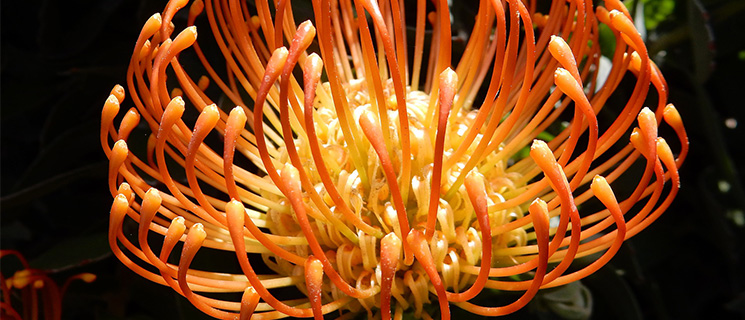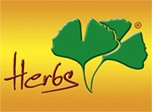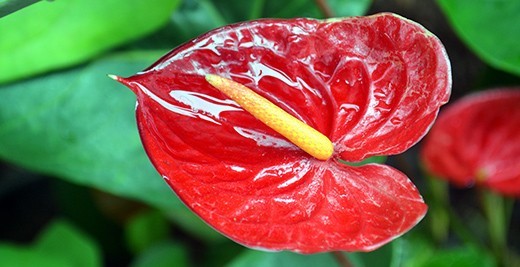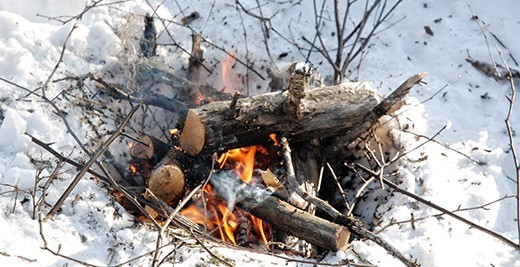
Do you know the feeling of a small, almost imperceptible dot at the tip of your tongue? When you say something, put a spicy food in your mouth, or drink a favourite juice, a pinhead-sized sore makes itself felt through a stinging pain. How best to deal with mouth ulcers? How to prevent them? And how does Traditional Chinese Medicine treat them?
The Western medicine perspective
A mouth ulcer, or stomatitis aphtosa, is a small, white sore that can be found anywhere in the oral cavity to our chagrin. Sometimes it is almost yellowish in colour and often have red borders. Though they can be pin-to-lentil in size, they can make chewing, swallowing and speaking quite a challenge. Small mouth ulcers disappear spontaneously within ten days, but larger ones may heal for several weeks and leave a scar in the oral cavity.
According to some sources it is an inflammation of the oral mucosa caused by herpesviruses. However, it is usually stated that we do not know exactly what the disease is caused by… But the reality is that mouth ulcers affect more than one fifth of the population - especially young people under the age of 30, and women suffer from them more often (especially before menstruation) than men. The formation of aphthae is also associated with a high amount of deposited pollutants, that is why smokers and people with oral prostheses or braces often suffer from them. However, they may also occur when the body doesn't have enough of the iron, vitamin B or folic acid, and also when exposed to prolonged stress and strain.
Since the cause is unknown, the treatment is also not clearly defined. It is recommended to increase the consumption of vitamins, disinfectants to remove excess bacteria, local anesthetics in the form of highly adhesive gels (but you can temporarily lose taste when using them...), laser treatment, etc. If I ask our grandmothers for advice, they would recommend calming the affected area by sucking an ice cube or rinse the mouth with chamomile. Also, propolis and onion act as antiseptics and increase the body's defensive capacity. Alfalfa or nopal cactus have harmonizing bacteria that improve the overall body microflora. Oregano oil and sage contribute to oral disinfection and are applied directly on the affected area. In the case of bleeding aphthae, mountain arnica extract or yarrow decoction is recommended.
The TCM perspective
Traditional Chinese Medicine does not consider only one “universal cause”, but, as always, it is necessary to see a particular person and the manifestation of disease. We therefore distinguish twelve basic states (but don't be mistaken, it is not just basic “run-of-the-mill” division), according to which it is necessary to choose a different, tailor-made approach:
1. Heat in the stomach
Mouth ulcers are very painful and have a red border. They occur on the inside of the cheeks or on the gums. They are associated with a feeling of thirst and heat, stinking breath, bleeding gums, burning pain in the upper abdomen, excessive hunger, nausea, and returning sour undigested foods. The tongue is red with a yellow coating.
2. Insufficiency of stomach and spleen qi with yin fire
Mouth ulcers with a pale edge on the inside of the cheeks or on the lower gums. Reddish or pale face with transient redness, dry mouth and chapped lips, recurring hot feeling in the face, but limbs are cold, occasional sore throat, poor digestion and anorexia, weakness of legs and hands, general exhaustion. The tongue is pale.
3. Heat in the large intestine
Mouth ulcers are on the upper gums and the tongue is red with a yellow coating.
4. Heart fire
Mouth ulcers are on the tip of the tongue. Heart palpitations, insomnia, restless dreams, nervousness, bitter mouth, thirst and ruddy face. The tongue is generally red with a yellow coating and an even deep red tip.
5. Empty heat in the heart
Mouth ulcers are especially the tip of the tongue. The tongue has no coating, but is generally red with the deep-coloured tip.
6. Insufficiency of yin with empty heat
Mouth ulcers have pale edges and worsen with overwork or lack of sleep. They are also accompanied by night sweats and dry throat, evening feelings of heat, especially on the soles of the feet, palms and chest. The tongue is red and uncoated. Other symptoms depend on the specific organ affected:
Insufficiency of the kidney yin – problems with urination and pain in the lower back.
Insufficiency of the liver yin – fluctuation and headache.
Insufficiency of the lung yin – breathing and coughing problems.
Insufficiency of the spleen yin – indigestion and anorexia.
Insufficiency of the heart yin – insomnia and palpitations
7. Insufficiency of the original qi
Mouth ulcers have a pale edge and worsen with overwork. The tongue is pale.
8. Conception pathway disharmonie
Mouth ulcers during pregnancy occur mainly under the tongue.
9. Liver fire
Mouth ulcers are on the inside of the cheeks, they are red in colour and very painful. The face is also red, dizziness and headaches, tinnitus, frequent outbursts of anger, constipation, thirst, bitter aftertaste and dark urine. The tongue is generally red with a more saturated colour on the sides and a dry yellow coating.
10. Hot toxin
Mouth ulcers are on the inside of the cheeks, red and with sticky yellow pus. They are accompanied by fever and frequent thirst. The tongue has red dots and a sticky coating.
11. Attack by hot wind with mucus
Mouth ulcers are red, swollen, with thin yellow pus and are most often found on the inside of the cheeks. The affected person feels pressure on the chest, has a feeling of nausea and vomits. Other symptoms include swollen tonsils and sore throats, clogged nose or yellow runny nose, fever, cold intolerance, cough, mild sweating, thirst and general body ache. The tongue is slightly red in front or sides in the middle.
12. Attack by cold wind with kidney insufficiency
Mouth ulcers are swollen, have a white border and can be found on the inside of the cheeks. Tinnitus and fever can appear, cough and cold intolerance are typical. In contrast to the previous case, however, symptoms such as dizziness, itchy throat, mild dyspnoea, nasal congestion or clear watery runny nose, sneezing, shoulder and scruff pain are added. The tongue is pale with a thin white coating.



